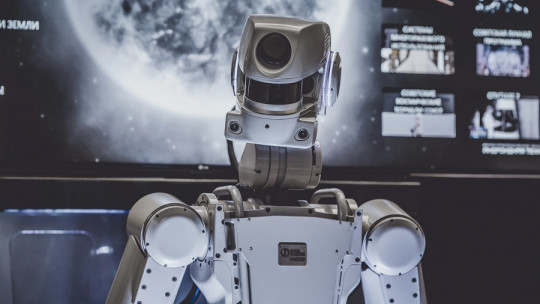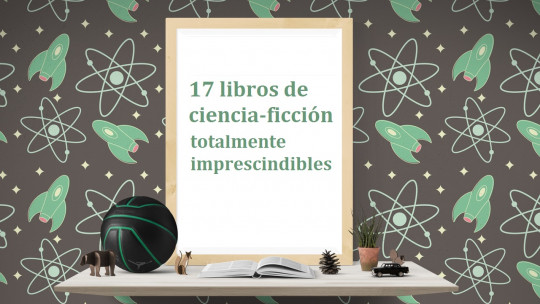Isaac Asimov, Stephen Hawking, Albert Einstein, Richard Dawkins… and many more are the names of great scientists who have written books with which they have brought the world of science closer to the general public.
But it is not only great scientists who have made important scientific dissemination. Others, both journalists and biographers, have taken it upon themselves to publicize great discoveries made by men and women who, unfortunately, their social context did not allow them to stand out.
Next We are going to know 20 recommended books on science with themes of all kinds and, many of them, suitable for all types of readers, both specialized and curious.
Books about science that you have to read
Next we are going to talk about 20 highly recommended science books both to get a first idea about fields as complex as physics or genetics, and to learn the names of scientists (and, especially, female scientists) who have been largely ignored throughout history.
1. The Feynman Lectures on Physics (Richard Feynman)
The Feynman Lectures on Physics is a set of books on physics based on the lectures of Richard P. Feynman, Nobel Prize winner in physics who was known as “The Great Explainer”, given to university students between 1961 and 1963, at the California Institute of Technology (Caltech). This work is one of the most important in the field, and is co-authored with Matthew Sands and Robert B. Leighton.
The work comprises three volumes. In the first, Feynman’s lectures are presented in which he addressed topics about radiation, mechanics and heat, including relativistic effects. In the second volume he talks mostly about electromagnetism and matter. Finally, in the third we talk about quantum mechanics.
2. Cosmos (Carl Sagan)
Cosmos is one of Carl Sagan’s most famous books, and is based on his well-known series “Cosmos: A Personal Journey”, which he produced with his wife Ann Druyan. Because his television series was so successful, Sagan focused on writing this book with the intention of being able to analyze in greater depth the topics discussed on the small screen.
The book contemplates human existence from a scientific and materialist point of view, making us understand our place and meaning in the cosmos, something very difficult to define.
3. The selfish gene (Richard Dawkins)

The Selfish Gene: The Biological Basis of Our Behavior is Richard Dawkins’ reference book and, although now a classic, it is still a very popular book.
In it, Dawkins exposes his idea of the selfish gene as a vehicle to explain what the subject of natural evolution is. In the book the idea is defended that the gene is the fundamental evolutionary unit also criticizing the evolutionary arguments of group selection.
4. Think fast, think slowly (Daniel Kahneman)
Think fast, think slow by Daniel Kahneman, Nobel Prize winner in Economics, It is one of the best-known books of the 21st century in the field of behavioral sciences This book brings together decades of research by the author in collaboration with psychologist Amos Tversky.
He exposes the three phases of his career, there being a first, in which delved into cognitive biases then, his development of perspective theory and, finally, his latest studies on the idea of happiness.
The title of the book is not causal. It is organized around two existing dichotomies, two modes of thinking: system 1, fast and instinctive, and system 2, slower and logical. Throughout the book he also exposes other dichotomous systems of behavior.
5. The Immortal Life of Henrietta Lacks (Rebecca Skloot)
The Immortal Life of Henrietta Lacks (The Immortal Life of Henrietta Lacks) was written by Rebecca Skloot and is about the life of Henrietta Lacks, an African American woman who was vitally important in cancer research because he suffered from cervical cancer and died from it in 1951.
Before she died, she had a biopsy performed and, without her consent due to being black in a pro-segregation society, she became a donor of cancer cells for research. With those cells she made a cell line culture that, to this day, is still active, being used for countless oncological experiments and called HeLa cells.
- On this page you will find more information.
6. The man who mistook his wife for a hat (Oliver Sacks)
The Man Who Mistook His Wife for a Hat was published in 1985 and written by the neurologist Oliver Sacks, this work being a reference in the anamnestic genre. In it Several clinical cases of patients with whom he had the opportunity to work throughout his career are described
The title is based on the case of a particular patient, whom Sacks calls “Dr. P”, who suffered visual agnosia. This neurological disorder prevents people from recognizing faces and objects, and hence the anecdote about him mistaking his wife for a hat.
- To see more information about this book, click this page.
7. The origin of species (Charles Darwin)
The Origin of Species is probably one of the best-known books in history, only competing with the Bible in translations and number of sales. It is the most famous book by the English naturalist Charles Darwin, and is considered the foundational book of everything that is the field of evolutionary biology being one of the most important scientific pieces ever written.
This book caused a sensation when it was published; It generated a lot of controversy due to its way of dealing with the authentic origin of the human being, in contrast to the religious idea of the intelligent design of man and other species. However, today his main ideas are considered a fundamental part of Biology as a science.
In short, the book states that individuals who are more adapted to the environment have a better chance of surviving than those who are less adapted. having more possibilities of reproducing and having its characteristics imposed on the next generation thus influencing the evolutionary process of the species itself.
- On this page you can purchase it.
8. The future of our mind (Michio Kaku)
Michio Kaku, American theoretical physicist, professor at New York University and expert in string theory, presents in The future of our mind a narrative that would be between the border of the latest neuroscientific advances and science fiction
Kaku explains how in the future there will be advances such as being able to record memories, practice telepathy, record our dreams and even control other people’s minds. A future that, for better or worse, could arrive within a relatively few years. He even defends the idea that in the not too distant future we will be able to transfer our knowledge to computers, like someone uploading a file to the cloud.
- If you are interested and want to read more about the book, you can access this page.
- You may be interested: “The 36 best Psychology books that you cannot miss”
9. A Brief History of Time (Stephen Hawking)
The late Stephen Hawking published in 2005 one of the best-known books in scientific dissemination, becoming a bestseller practically as soon as it was displayed in bookstores
It discusses cosmology topics, such as the Big Bang and black holes, but in a simple way, suitable for a non-specialized audience. In fact, the publication of this book was based on the fact that a previous book by Hawking, A Brief History of Time: From the Big Bang to Black Holes (1988), was difficult to understand for many of its readers.
- You can purchase it here.
10. The Bonobo and the Ten Commandments (Frans de Waal)
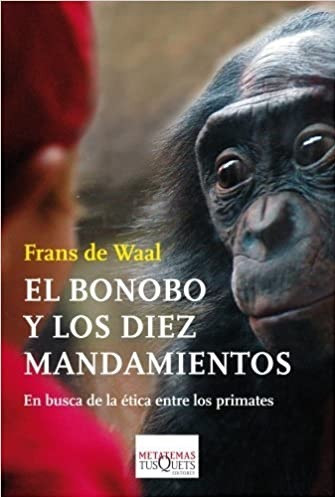
Frans de Waal, Dutch biologist, explains in The Bonobo and the Ten Commandments a way of seeing these primates that does not leave you indifferent.
This researcher has spent decades studying the behavior of bonobos and chimpanzees, observing attitudes that we would associate with our species such as empathy, cooperation and even mourning after the death of another individual.
- To read more about the book or order it, you can access this page.
11. We are our brain: how we think, suffer and love (Dick Swaab)
Dick Swaab, a Dutch neurologist, published a book in 2011 that became a best-seller due, surely, to some of the controversial clarifications he shared in it.
In We are our brain: how we think, suffer and loveSwaab tells, in an entertaining and quite rigorous way, about the changes in the brain related to sexuality, puberty, psychological disorders and faith
In fact, in this book he states that sexual orientation is determined by the hormones secreted by the mother during embryonic development, something that perhaps earned the book its popularity.
12. The countdown (Alan Weisman)
In The Countdown, Alan Weisman tries to make us aware of how limited resources are on Earth and their rate of consumption.
Every four and a half days, one million more people are born on the planet, people who will feed themselves in addition to consuming products such as televisions, cars and clothes If the entire planet had the same consumption pattern as developed countries, humanity would need the resources of three planets to make it to the end of the year.
Alan Weisman resorts to a countdown, a race against time in which countries should now find solutions to avoid the collapse of humanity. In this book, Weisman uses the expert voice of people from various cultures, religions and nationalities, trying to raise awareness that saving the planet is not an issue that should be taken up separately by governments.
13. Brief history of chemistry: Introduction to the ideas and concepts of chemistry, (Isaac Asimov)
Isaac Asimov was a Russian scientist, not only known for being one of the great minds of the 20th century, but also for being a prolific writer of science fiction works, being considered one of the references of the genre
In Brief History of Chemistry: Introduction to the Ideas and Concepts of Chemistry introduces concepts and ideas of chemistry present throughout the history of humanity, going from antiquity to atomic theory.
14. What is life? (Erwin Schrödinger)
Life is a truly spectacular phenomenon, and even more so if we take into account that it is something that, probabilistically speaking, is remotely possible. In What is life? who was a Nobel Prize winner, Erwin Schrödinger raises this question, in a somewhat philosophical way but without leaving aside science, addressing concepts of thermodynamics, trying to understand biological complexity, and talking about the debate of determinism and chance
15. Homo Deus (Yuval Noah Harari)
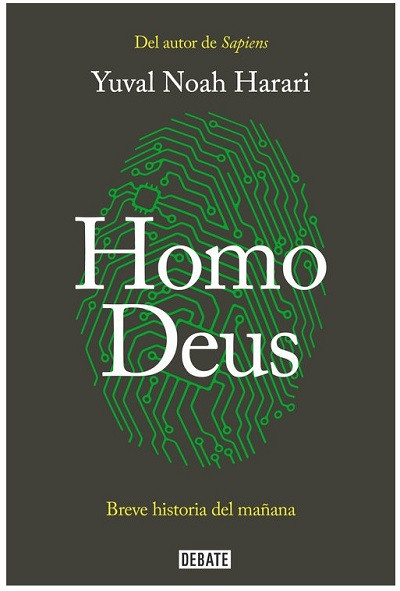
In Homo DeusYuval Noah Harari poses several questions about the increasingly sophisticated technological world and how it influences our decision making In addition, it also raises questions about evolution, such as what will happen once it has been possible to design modified brains in such a way that they are perfect, will natural selection give way to intelligent design made in the laboratory?
In the work he presents both dreams and nightmares that could materialize throughout our century, such as overcoming death to the creation of artificial intelligence, an intelligence which could turn against us.
16. On the theory of special and general relativity (Albert Einstein)
What was initially going to be a short scientific article ended up becoming one of the best-known books of the 21st century, and written by none other than Albert Einstein himself. In On the theory of special and general relativityEinstein He tries to give the most exact idea possible about his theory of relativity, approaching it from both a scientific and philosophical point of view
It is divided into three parts. The first talks about special relativity, the second about general relativity and, finally, the third talks about considerations about the universe treated as a whole.
17. Wise Men (Adela Muñoz Páez)
There are many women who have contributed to great scientific advances but have been ignored. In Did you knowby Adela Muñoz Perez, the history of some of the many women who have made great contributions to science is rescued in addition to explaining why they were so ignored and unknown, despite the fact that some of their inventions and discoveries have marked a before and after.
In addition, a reflection is made on the role of women in science and how they have been prevented from studying it, using as examples the case of universities in the last century, which prohibited the access of female students, or how women could not go to monastery libraries during the Middle Ages.
18. Women of the Moon (Daniel Roberto Altschuler and Fernando J. Ballesteros)
Astronomers and scientific disseminators Daniel Roberto Altschuler and Fernando J. Ballesteros present in Women of the Moon the existing inequality with the recognition of women.
Of the 1,594 geographical features on our satellite that have been named, only 31 have women’s names, being mostly European and North American. These data show the inequality that, to this day, continues to exist not only in the recognition of women in great scientific discoveries but also varies greatly from region to region.
19. Dying young, at 140 (Mónica G. Salomone, María Blasco Marhuenda)
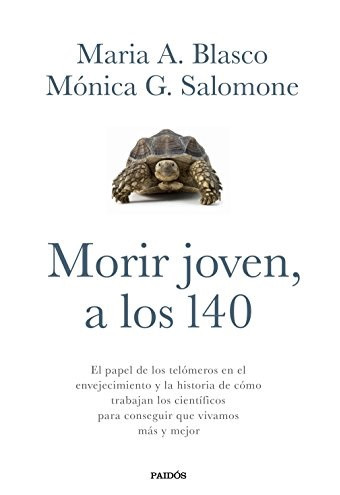
Aging is an inevitable process. Or not? In Dying young, at 140María A. Blasco, molecular biologist, and Mónica G. Salomone, journalist, explore the change in the scientific paradigm that, until recently, saw aging as an inevitable process,
However, the book highlights the fact that Through scientific advances, great things have been achieved, such as increasing survival and life expectancy in patients with Alzheimer’s or cancer What we see today as something totally impossible does not have to be tomorrow, as prolonging our life for several more decades is something that, one day, will no longer be a dream.
20. Girls are about science (Irene Cívico and Sergio Parra Castillo)
Let’s make a mental effort: let’s try to say ten names of female scientists? Difficult, right? The curious thing is that we do know of great scientific discoveries made by women, such as radium or DNA research, carried out by Marie Curie or Rosalind Franklin, respectively.
There are many things in our daily lives that were female inventions or discoveries, even though their authors have gone largely unnoticed. Girls are about science, as the title of the book says and, as with Sabias, Irene Cívico and Sergio Parra Castillo show us the lives and discoveries of great women, women who, if they had not been interested in science, They wouldn’t have been able to make our lives much better.
- Einstein, Albert, Ph.D. Professor of Physics at the University of Berlin (1920). Relativity: The Special and the General Theory: Popular Exposition; authorized translation by Robert W. Lawson, D.Sc., University of Sheffield (3 ed.). London: Methuen & Co. Ltd. Retrieved July 4, 2016 – via Internet Archive.
- Dawkins, R. (1976). The Selfish Gene. Oxford: Oxford University Press.
- Darwin, C., Duthie, J.F., & Hopkins, W. (1859). On the origin of species by means of natural selection: Or, The preservation of favored races in the struggle for life. London: John Murray, Albemarle Street.



